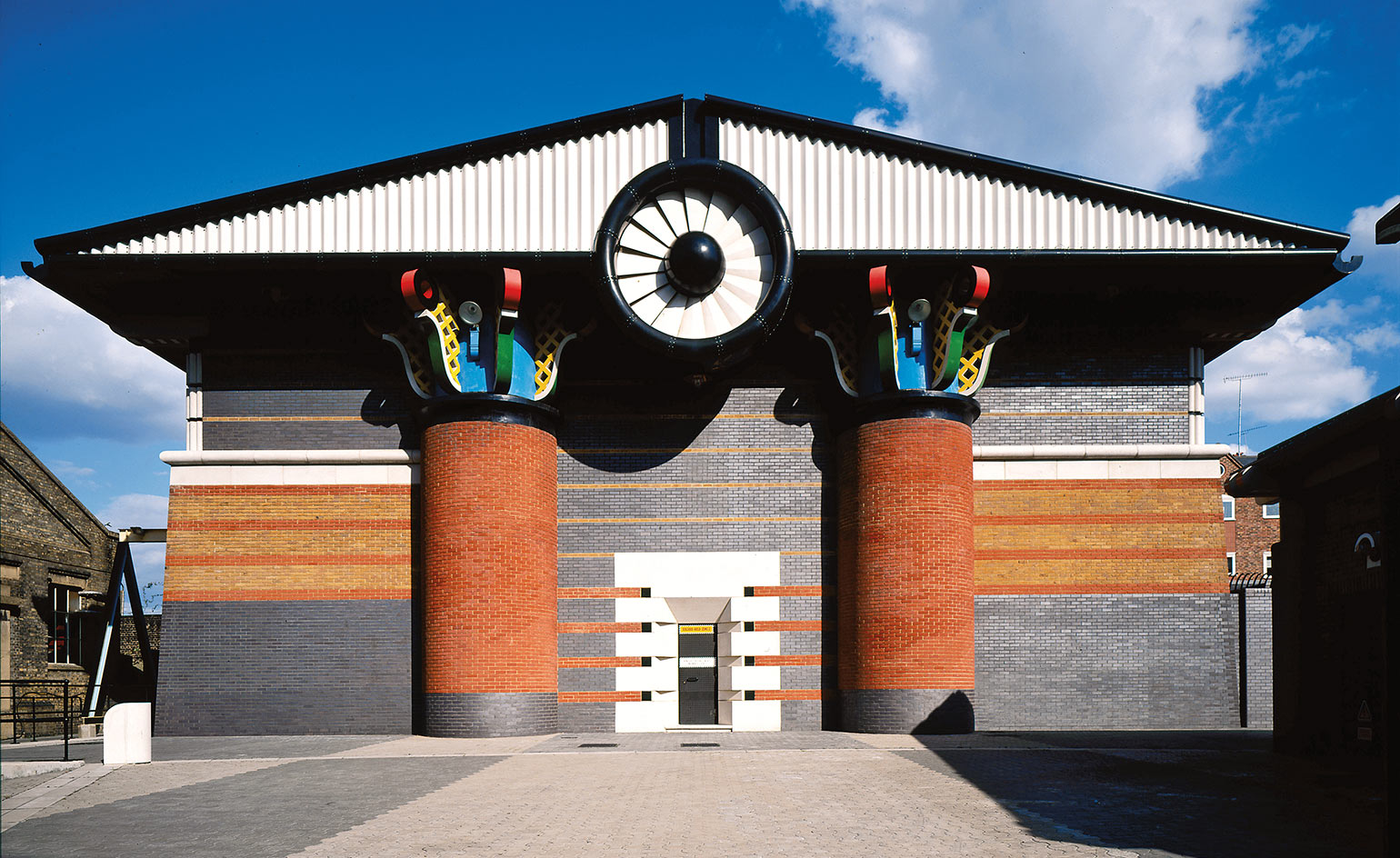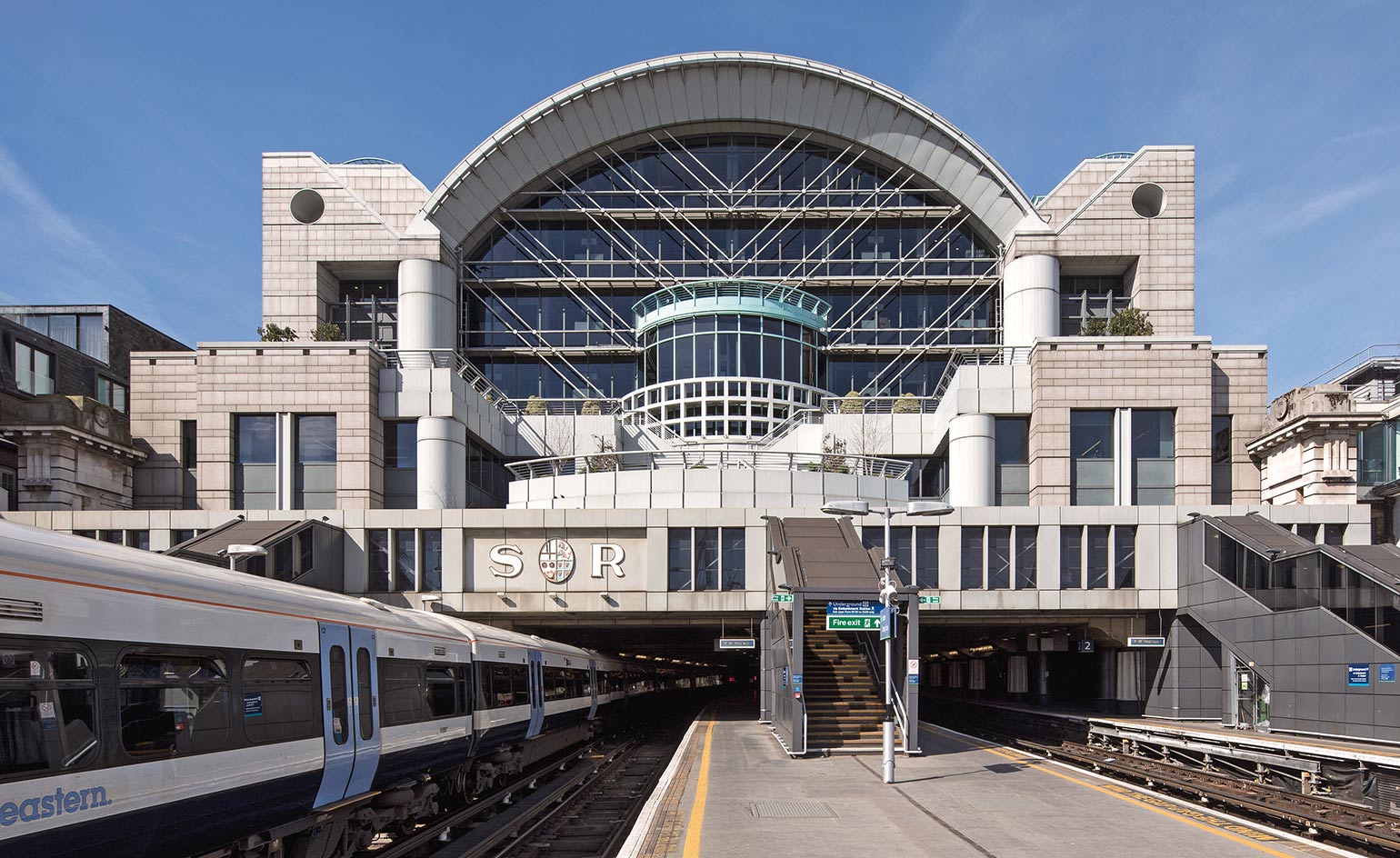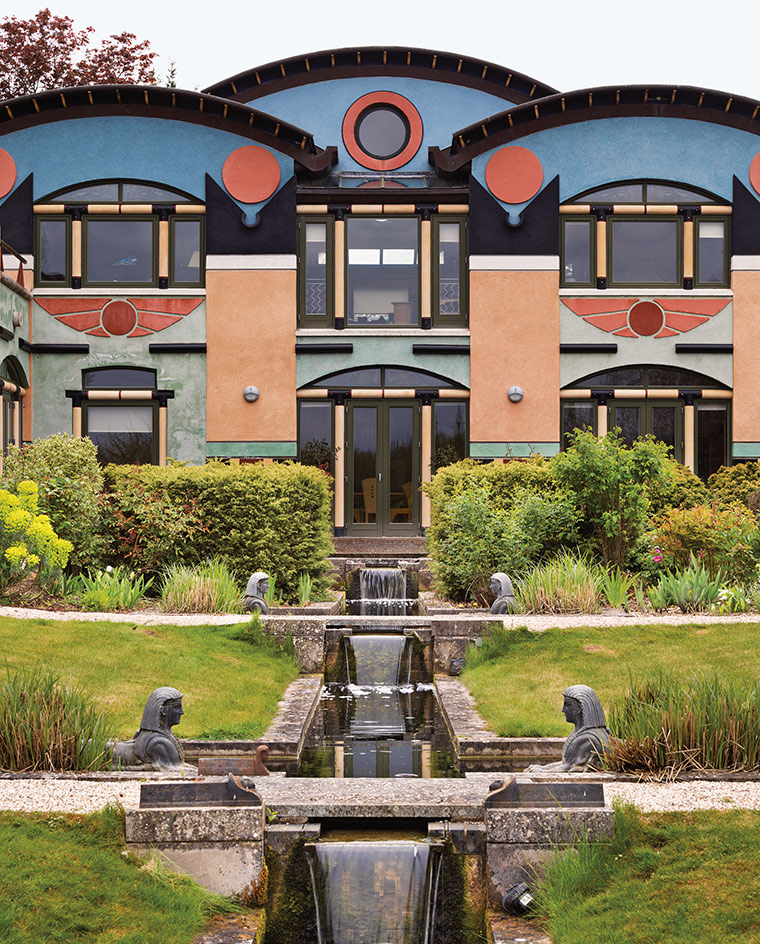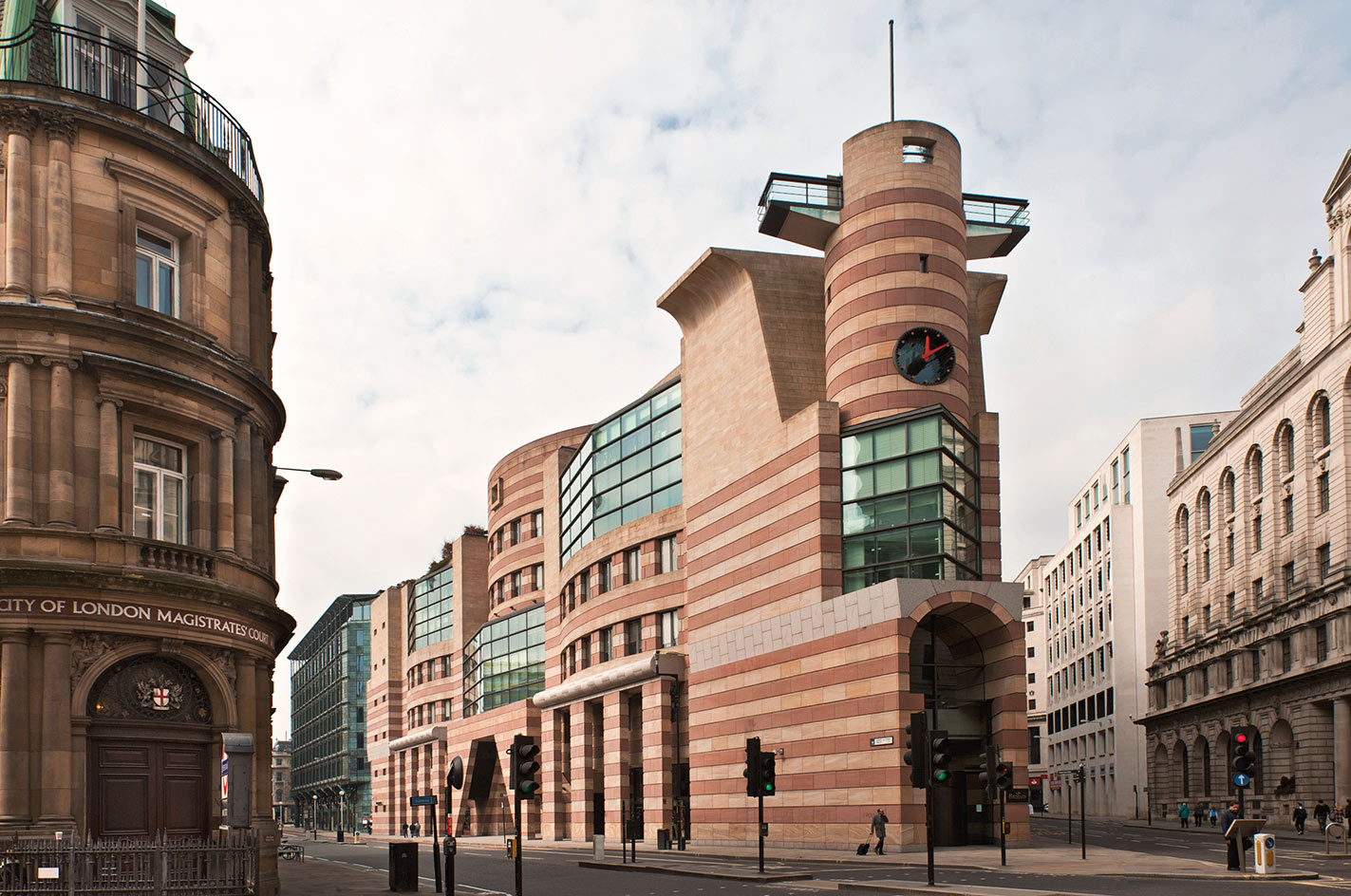Rebel revival: a new tome revisits British postmodernist architecture

In Britain, post-modern architecture was part of a wider riposte and rebellion – as in other art forms – against the rigid formality and uniformity of the monotony of the modernist style, which was de rigeur in architecture, following the explosive success of the likes of Le Corbusier and Mies van der Rohe.
First conceived in the 1960s, post-modernism prospered in Europe in the 1980s, with notable examples still standing in London including James Stirling’s Tate Gallery, and post-modern pioneer Venturi's Sainsbury Wing at the National Gallery, and Farrell’s SIS building (completed later in the early 1990s).
In a new book published by Batsford, authors Geraint Franklin and Elain Howard pay homage to Britain’s finest examples of post-modern buildings and the architects who 'formed the backbone' of the post-modern style in Britain. Their principle of 'more is more' and the style's hybrid vocabulary was hard to define, but shaped a legacy that, though often overlooked or diminished, has been profound.

Embankment Place, Charing Cross, City of Westminster, London. Designed from 1987–90 by Terry Farrell Partnership.
As opposed to the dominant practice of early 20th century modernism, post-modernism offered urban buildings that engaged with their surroundings and could propose metaphors and symbols for many ideas simultaneously – 'British post-modernism' in particular, write the authors, 'remained more contextual than that of other countries, strong in its references not only to classicism but also to Dutch brick traditions, Art Deco, the English Arts and Crafts Movement and the Vienna Secession.'
Some of the more eccentric and compelling examples that jump off the pages include the colourblock East Workshops at The Harley Studios, Nottinghamshire, Sphinx Hill in Oxfordshire, and the Isle of Dogs Pumping Station — with a chapter dedicated to the stylistic hedonism of John Outram.
Celebrating Britain’s successes and failures in post-modern architecture (the latter, arguably, in public housing), the book also takes up the important role of documenting many post-modern buildings that have since been demolished — as post-modernism fell rapidly out of favour in the 1990s, and many beautiful examples were destroyed. Through sumptuous photographs and detailed texts giving the history of these buildings, Post-Modern Buildings in Britain reveals not only the lost language of post-modernism but also the richness of its ideas. Perhaps it's time for a comeback.

Another iconic post-modern pillar of British architecture is Sphinx Hill in Moulsford, Oxfordshire which was designed from 1994 onwards and built 1998–9 by John Outram Associates.

The SIS Building, 85 Albert Embankment, London. Designed 1990–4 by Terry Farrell & Co.

The notorious One Poultry in Bank, City of London. Designed 1986–8 and built 1994–8; listed Grade II* in 2016; designed by James Stirling, Michael Wilford & Associates.

Post-Modern Buildings in Britain by Geraint Franklin and Elain Harwood is published by Batsford
INFORMATION
Post-Modern Buildings in Britain, published by Batsford
Receive our daily digest of inspiration, escapism and design stories from around the world direct to your inbox.
Charlotte Jansen is a journalist and the author of two books on photography, Girl on Girl (2017) and Photography Now (2021). She is commissioning editor at Elephant magazine and has written on contemporary art and culture for The Guardian, the Financial Times, ELLE, the British Journal of Photography, Frieze and Artsy. Jansen is also presenter of Dior Talks podcast series, The Female Gaze.
-
 The Testament of Ann Lee brings the Shaker aesthetic to the big screen
The Testament of Ann Lee brings the Shaker aesthetic to the big screenDirected by Mona Fastvold and featuring Amanda Seyfried, The Testament of Ann Lee is a visual deep dive into Shaker culture
-
 Dive into Buccellati's rich artistic heritage in Shanghai
Dive into Buccellati's rich artistic heritage in Shanghai'The Prince of Goldsmiths: Buccellati Rediscovering the Classics' exhibition takes visitors on an immersive journey through a fascinating history
-
 Love jewellery? Now you can book a holiday to source rare gemstones
Love jewellery? Now you can book a holiday to source rare gemstonesHardy & Diamond, Gemstone Journeys debuts in Sri Lanka in April 2026, granting travellers access to the island’s artisanal gemstone mines, as well as the opportunity to source their perfect stone
-
 Arbour House is a north London home that lies low but punches high
Arbour House is a north London home that lies low but punches highArbour House by Andrei Saltykov is a low-lying Crouch End home with a striking roof structure that sets it apart
-
 A former agricultural building is transformed into a minimal rural home by Bindloss Dawes
A former agricultural building is transformed into a minimal rural home by Bindloss DawesZero-carbon design meets adaptive re-use in the Tractor Shed, a stripped-back house in a country village by Somerset architects Bindloss Dawes
-
 RIBA House of the Year 2025 is a ‘rare mixture of sensitivity and boldness’
RIBA House of the Year 2025 is a ‘rare mixture of sensitivity and boldness’Topping the list of seven shortlisted homes, Izat Arundell’s Hebridean self-build – named Caochan na Creige – is announced as the RIBA House of the Year 2025
-
 In addition to brutalist buildings, Alison Smithson designed some of the most creative Christmas cards we've seen
In addition to brutalist buildings, Alison Smithson designed some of the most creative Christmas cards we've seenThe architect’s collection of season’s greetings is on show at the Roca London Gallery, just in time for the holidays
-
 In South Wales, a remote coastal farmhouse flaunts its modern revamp, primed for hosting
In South Wales, a remote coastal farmhouse flaunts its modern revamp, primed for hostingA farmhouse perched on the Gower Peninsula, Delfyd Farm reveals its ground-floor refresh by architecture studio Rural Office, which created a cosy home with breathtaking views
-
 A revived public space in Aberdeen is named Scotland’s building of the year
A revived public space in Aberdeen is named Scotland’s building of the yearAberdeen's Union Terrace Gardens by Stallan-Brand Architecture + Design and LDA Design wins the 2025 Andrew Doolan Best Building in Scotland Award
-
 A refreshed 1950s apartment in East London allows for moments of discovery
A refreshed 1950s apartment in East London allows for moments of discoveryWith this 1950s apartment redesign, London-based architects Studio Naama wanted to create a residence which reflects the fun and individual nature of the clients
-
 In this Cotswolds home, drama meets minimalism
In this Cotswolds home, drama meets minimalismCotswolds home Hiaven house, with interiors designed by McLaren Excell, is a perfect blend of contemporary chic and calm, countryside drama